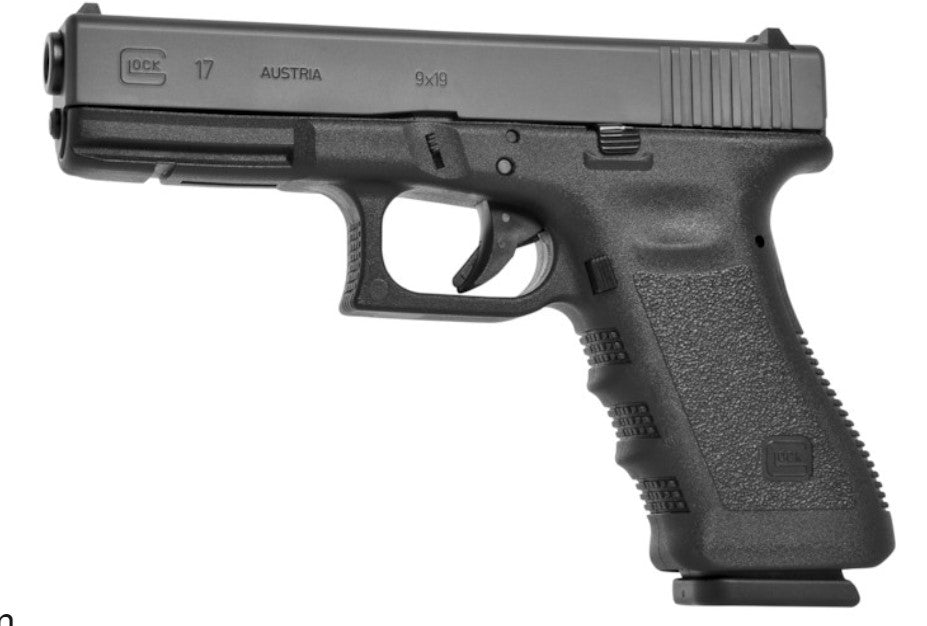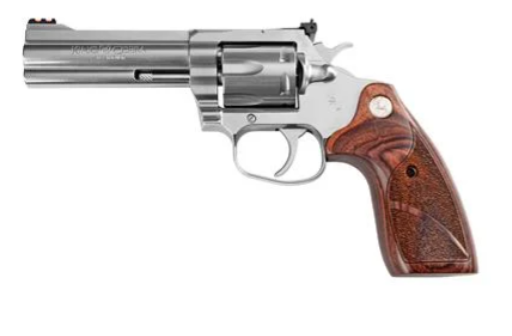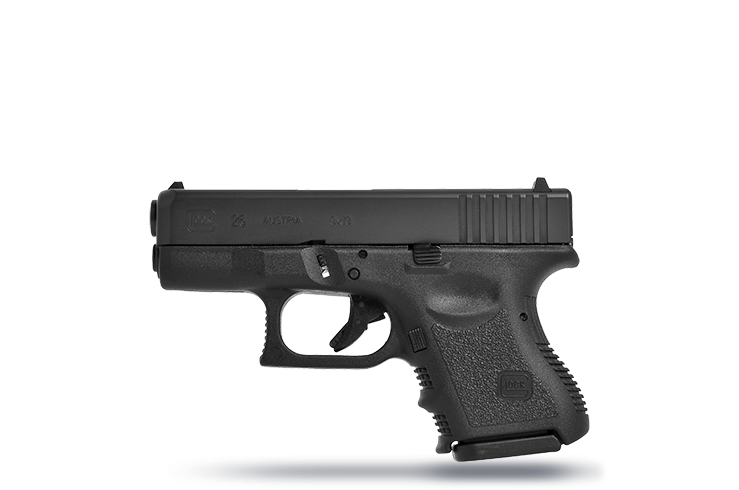Written by Mark Buff , GunZee founder and CEO.
Revolvers or semi-automatic pistols for concealed carry? Revolvers boast simplicity while semi-auto handguns offer more capacity. Each side has proponents and detractors.
Let’s compare revolvers and semi-automatic pistols as concealed carry options, and analyze the trade-offs to help you decide which is better suited to your needs.
Quick links:
What is a better choice for women?
Whether you decide on a revolver or a semi-auto, get GunZee's high-quality memory foam pad and enjoy the most comfortable IWB concealed carry ever!
What is concealed carry?
Concealed carry refers to the practice of carrying a weapon on one’s person in public in a manner that conceals its presence from view. The critical defining factor of concealed carry is that the firearm or weapon is not openly visible to those nearby.
In the majority of states in the U.S., citizens can obtain permits or licenses to carry concealed firearms after completing mandatory training courses on gun safety and laws, as well as passing thorough background checks. The primary rationale behind concealed carry permissions is to enable individuals to carry weapons for personal and property defense purposes.
Different states have varying requirements for issuing concealed carry permits, with some being more restrictive than others.
To learn more about concealed carry reciprocity in the USA, take a look at our article!
What are revolvers and how do they work?
A revolver is a type of handgun that uses a rotating cylinder to hold ammunition in a series of chambers. When the trigger is pulled, the cylinder rotates and the hammer is cocked back. As the cylinder aligns the next chamber containing a live round with the barrel, the hammer drops, firing the round.
To reload a revolver, the user opens the cylinder manually, utilizing either a swing-out design that pivots left or right, or a break-top that hinges upward at a middle axis. Opening the cylinder provides access to eject spent cartridge casings. The user then inserts new ammunition individually into the chambers that make up the cylinder.
When fully loaded, the cylinder clicks back into position aligned with the barrel and enclosed firing mechanism frame, rotated by the action of the trigger and hammer. This manual reload process contrasts with semi-automatic pistols, which reload automatically from a magazine fed into the grip handle, without the need to access the firing chamber directly.
This YouTube commenter has more trust in revolvers than semi-autos.
What are semi-automatic handguns and how do they work?
Semi-automatic handguns are self-loading firearms that do not require manually chambering a round after each shot fired. When the trigger pulls, a cartridge discharges and the empty case automatically ejects as the slide cycles back.
The slide's rearward motion also cocks the hammer to be ready for the next shot. Then the slide moves forward under spring pressure, stripping the next cartridge from a magazine and feeding it up into the chamber so it is ready to fire when the trigger pulls again.
This makes another shot ready without manually working a bolt or loading directly into the chamber like a revolver. The magazine is a critical advantage of semi-autos, as it pre-stores multiple rounds in a quickly reloadable package, allowing much faster reloading.
The semi-auto design allows for a higher rate of fire and fast, easy reloading.
“Semi-autos just feel better and more balanced in the hand than revolvers,” says this commenter.
Pros and cons
Revolvers and semi-autos have their own set of advantages and disadvantages. Consider the following to make an informed decision when purchasing your next handgun.
Revolvers
Revolvers maintain their relevance alongside modern semi-auto pistols thanks to some advantages but also have certain drawbacks.
The main pros and cons are:
Pros
- Known for simplicity and reliability
- Less prone to jamming issues
- Allow a variety of self-defense rounds like hollow points
- Easier to maintain and clean due to fewer moving parts
- No need to change grip while firing
Cons
- Lower ammunition capacity
- Slower reload
- Increased recoil and heavier trigger pull
- More bulk than semi-automatics
- Limited options for accessories and mods
This YouTube commenter has “always been a revolver fan.”
Semi-autos
Semi-automatic pistols offer newer technology and innovations that provide firepower and speed advantages over old-fashioned revolvers. But there are also some disadvantages to consider.
The key pros and cons of semi-automatics are:
Pros
- Faster reloads with detachable box magazines
- Reduced recoil for better accuracy
- Higher ammunition capacity per magazine
- Slimmer profiles suit concealed carry holsters
Cons
- More prone to jamming than revolvers
- Require proper grip to function
- Fixed chambers limit specialty ammo options
- Need training to manage malfunctions
This YouTube commenter prefers semi-autos because of their higher capacity and easier concealment.
How do I choose the right one?
Keep these factors in mind when choosing between a revolver and a semi-auto pistol:
Ease of use
Revolvers have simpler mechanisms and fewer parts, which makes them easier for shooters to understand and operate. The main downside is that they require manual reloading after each shot, which is much less convenient than semi-automatics.
Rounds need to be manually loaded into the individual chambers of the rotating cylinder, locking them back into alignment with the barrel before firing. Empty cases must also be manually ejected one by one before reloading.
Semi-auto handguns offer faster firing rates and larger magazine capacities, but they can be more complicated to operate thanks to things like slide manipulation, magazine switching, and malfunction control.
Semi-automatics feature detachable box magazines inserted into the grip which hold 5-17 rounds or more. Once a round is fired, semi-autos automatically cycle in the next cartridge from the magazine. Semi-auto magazines can be reloaded extremely quickly, which can be the difference between life and death in self-defense situations.
Capacity
Revolvers generally have a much lower ammunition capacity than semi-automatic pistols. A typical revolver cylinder holds 6 shots maximum, while some small pocket revolvers are limited to only 5 rounds.
Semi-auto handguns typically start from a 7+1 bullet capacity in compact single-stack models, and up to 17+1 or greater in double-stack magazine designs. Larger extended magazines can offer up to 30 rounds of ammunition.
The capacity advantage is a key benefit of semi-autos, though revolver users cite needing fewer shots for self-defense situations given the increased stopping power of revolver cartridges.
Accuracy
Accuracy relies more on a shooter than a gun. Some typical generalizations still exist—the semi-auto detachable magazines allow for higher ammo capacity and faster reloads. This allows more range practice that breeds familiarity and competency for accuracy's sake.
Semi-auto models also frequently have updated sights, grips, and customizability vs more bare-bones traditional revolvers. But the heavier all-steel construction of most revolvers together with grip ergonomics that force a more locked wrist stance can lend themselves to steadier, more controlled firing for newer shooters compared to lighter polymer semi-auto frames.
Revolvers have a simpler design and fewer moving parts, which contributes to consistency of shot placement. The shorter barrel length limits their accuracy compared to semi-automatics with longer barrels. Semi-auto pistols also feature adjustable sights, better grips, and match-grade barrels, which will serve to enhance accuracy to a certain degree.
Ultimately, the skill of the shooter and their familiarity with the firearm will determine accuracy regardless of the type of firearm.
Power
Revolvers can handle more powerful ammunition than semi-automatic handguns. The sturdy frame and mechanics of a revolver are built to withstand repeated firing of magnum rounds, specialized hunting loads, or heavier bullet types that generate greater recoil forces. Semi-automatics may not cycle properly or can get damaged when attempting to fire more powerful ammo.
Most service-caliber semi-auto pistols offer enough power for self-defense. Still, the flexibility to shoot more powerful cartridges such as the .357 Magnum, .44 Magnum, or the .500 S&W Magnum is reserved for specialized revolver platforms.
Concealability
For concealed carry purposes, semi-automatic pistols have some advantages over revolvers. Many semi-auto pistol options now are specifically designed as micro-compact, slimline models well suited for discrete carry. This includes popular single-stack 9mms (e.g. Springfield Hellcat or Sig Sauer P365), among similar offerings no wider than 1 inch for easy holstering and concealment.
Revolvers are bulkier by nature, which can print or show through clothing more easily. However, small-frame snub-nosed revolvers, especially lightweight polymer models like the Smith & Wesson Airweight, can still be carried discreetly by those who prefer the revolver for personal defense.
Customization
Semi-automatic pistols offer more accessory and customization options than revolvers. The rail mounts, removable grips, and slides of most semi-autos allow add-ons such as weapon lights, lasers, aftermarket sights and triggers, and more. Their detachable box magazine design also lets users install +2 base pad extensions or larger capacity extended magazines.
Revolvers are limited to accessorization. Classic revolver models offer some customization, such as grips with various wood or polymer panels installed for fit and comfort. Performance-enhancing upgrades also emerge via smoothed crisp single-action triggers, visible fiber optic sights, viz laser grips, and speedloader holders to hasten the reloading process.
Revolvers and semi-autos provide potential upgrades tailored to user needs, but semi-autos offer more accessories given their prevalence and popularity.
Types of revolvers
There are several revolver types and actions a concealed carrier may consider:
- Double-action revolvers require no cocking of the hammer to fire. Pulling the trigger advances cylinder rotation while also drawing back and releasing the hammer in a dual action. This allows rapid successive shots, but trigger pulls are typically longer and heavier.
- Single-action revolvers require manual hammer cocking between each shot's trigger pull. This light crisp trigger promotes accuracy, supported also by single-action revolvers often having premium sights and triggers. However, the lack of double-action functionality needs strong situational awareness.
- Many modern revolvers combine both single and double-action firing modes into one hybrid system. This provides options like carrying the hammer down on a loaded chamber for safe ready-draw double-action shooting, while also allowing deliberate precision single-action fire.
Types of semi-autos
Subcompact, slimline pistols built on single-stack magazines hold less ammunition than full-sized duty handguns, but their compact polymer frames slide smoothly into discreet holsters for comfortable hidden carry. Popular slim 9mm models include the Smith & Wesson Shield, Sig Sauer P365, and Glock 43.
Full-sized and compact semi-autos bring more rounds onboard and longer sight radii for defensive accuracy. Their wider double-stack magazines make reloads rapid under pressure, with some holding over 20 rounds flush fit or 30+ using grip extensions. Worn openly these serve as tactical duty sidearms and still conceal well under light cover garments.
Metal framed pistols offer timeless durability and craftsmanship with all-steel builds largely impervious to weather and dropped mags. Their added weight also helps mitigate felt recoil, with many metal models coveted for their flawless reliability and crisp single-action triggers.
Semi-automatic handguns now come in many calibers, with multiple trigger system types, manual safety options, barrel lengths, sight configurations, and personalized finish options. This wide range of current semi-auto pistol designs means concealed carriers can find an ergonomic and reliable model suitable for their personal defensive needs.
Revolvers or semi-autos for women
Small-frame revolvers are frequently recommended as new-shooter-friendly options. Models like 5 or 6-shot .38 special snub nose Smith & Wesson or Ruger revolvers have mild recoil many women find easy to control. The simple operation also requires less training for proficiency compared to semi-autos.
Compact and subcompact semi-auto pistols now provide similar concealable formats for female shooters. Single stack 9mm models from Sig Sauer, Glock, and Smith & Wesson hold over 10 rounds in slimline formats fitting a woman's hand size. Higher magazine capacity and fast reload potential give confidence in tense situations.
About GunZee
At GunZee, we care about comfortable concealed carry. No need to tolerate uncomfortable KYDEX holsters that dig into your waist. That's why we created our memory foam holster pad to enhance the comfort of everyday carry for all body types.
Our holster padding conforms to your body's natural contours for extra comfort. Once you try it, you'll wonder how you ever went without it.
Proper gun care is also important. Our foolproof handgun cleaning kits help keep your pistol in flawless working order. We also offer an all-in-one universal gun cleaning kit that works for pistols, rifles, and shotguns—everything the responsible gun owner needs to maintain their firearm collection.
Revolver vs semi-auto FAQ
Do revolvers hit harder than pistols?
Revolvers are known for their ability to handle more powerful ammunition, which can make them hit harder than pistols. This is due to their stronger build and the fact that they can accommodate higher caliber rounds, such as .357 Magnum or .44 Magnum, which have a greater stopping power compared to typical pistol rounds like 9mm or .45 ACP.
What is better: a 9mm pistol or a revolver?
9mm pistols are popular for their higher capacity and faster reload times, making them suitable for self-defense and law enforcement. On the other hand, revolvers are valued for their reliability and ability to handle more powerful rounds, making them a good choice for hunting and home defense.
Is a revolver enough for home defense?
A revolver can be a good home defense weapon due to its simplicity, reliability, and ability to use powerful ammunition. They have lower capacity than semi autos, so accurate shot placement is key.
Are revolvers louder than semi-autos?
Revolvers, especially snub-nose models, tend to be much louder than semi-automatic pistols when fired. This is because the small barrel length and large exposed cylinder gap direct excessive noise and muzzle flash forward, compared to the closed slide mechanism of a semi-auto redirecting these forces.
Is there any benefit of a single-action revolver?
Single-action revolvers have a simpler design and trigger mechanism, which can lead to a lighter and more consistent trigger pull. This can be beneficial for accuracy, especially in precision shooting or hunting scenarios. Additionally, some shooters appreciate the historical and aesthetic appeal of single-action revolvers.
Do revolvers have less recoil than pistols?
When using full-power defensive loads, heavier all-steel revolvers often have greater felt recoil than polymer-framed semi-auto pistols of equivalent caliber and weight. The revolver's metal construction doesn't "give" under recoil like polymer pistol frames. Snub-nose and pocket revolvers in very small calibers like .38 Special can have milder felt recoil than some defensive 9mm loads used in comparably sized semi-auto pistols.
Why do people still prefer revolvers?
People prefer revolvers for various reasons, including their reliability, simplicity, ability to handle powerful ammunition, and classic design. Some shooters also appreciate the nostalgic and historical appeal of revolvers. Additionally, in certain scenarios such as hunting or backcountry carry, revolvers are valued for their robustness and ability to handle a wide range of loads.
Why do revolvers cost more than pistols?
Revolvers cost more than pistols primarily because they are produced in much lower volumes compared to the widely popular semi-automatic pistol market. Revolvers have metal parts that must be precisely machined in low quantities. This costs more than the high-volume production of polymer pistol frames and sheet metal slides. Although simpler in mechanism, their artisan-level hand fitting and assembly keep new revolver prices higher than semi-auto pistols.
About the Author
Mark Buff is the founder and CEO of GunZee. He is an ardent firearms enthusiast and has been carrying concealed for more than 15 years. He created GunZee to solve his own problem: that of uncomfortable KYDEX holsters. His patented GunZee memory foam holster pad makes inside-the-waistband carry super comfortable.
Further reading
What is the best CCW gun for left-handers?
What is the best Smith & Wesson for concealed carry?
The best CCW holster for micro-compact handguns
What are the best concealed carry guns for seniors?
What is the most comfortable CCW holster?
Best concealed carry tips for a small frame







